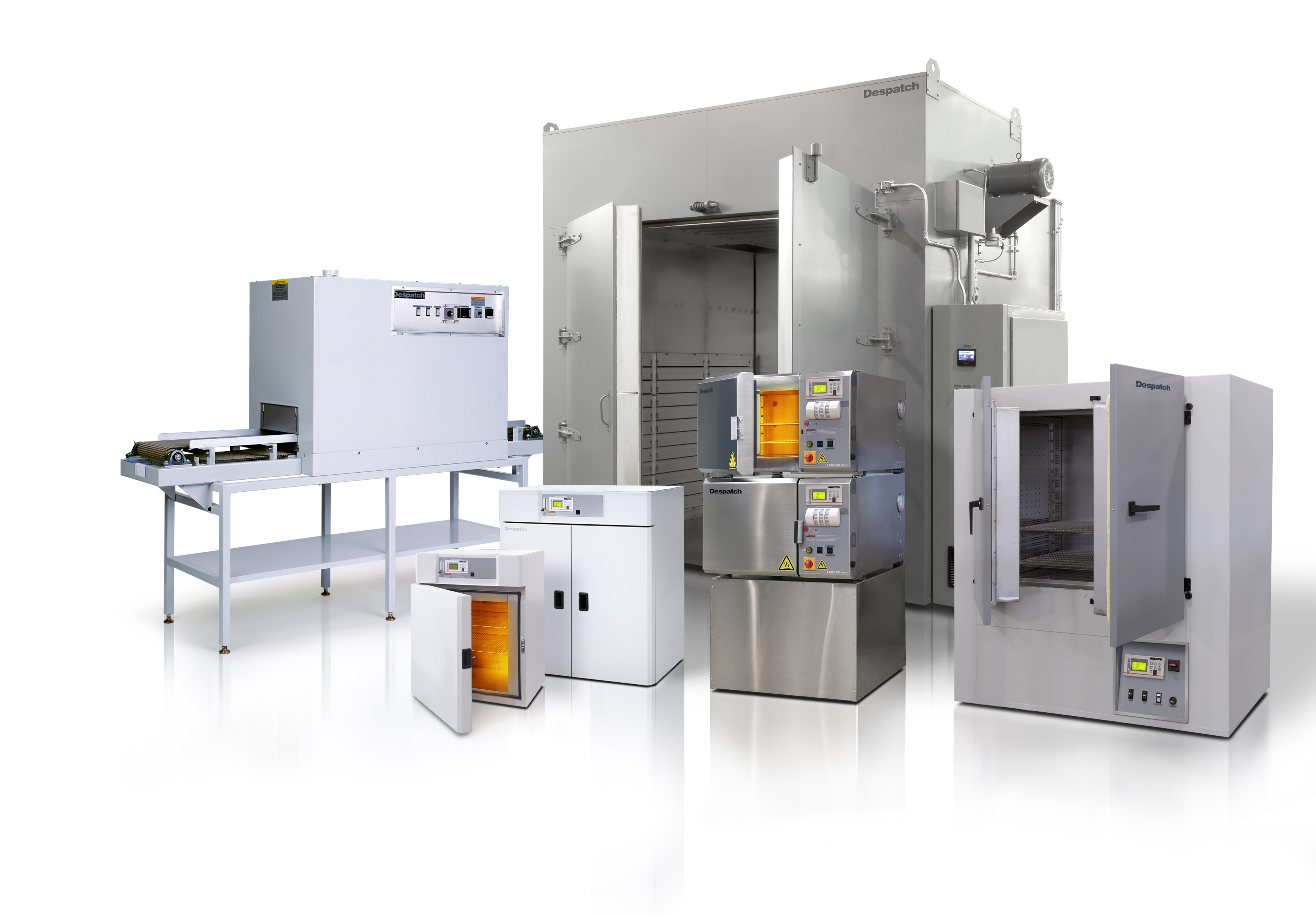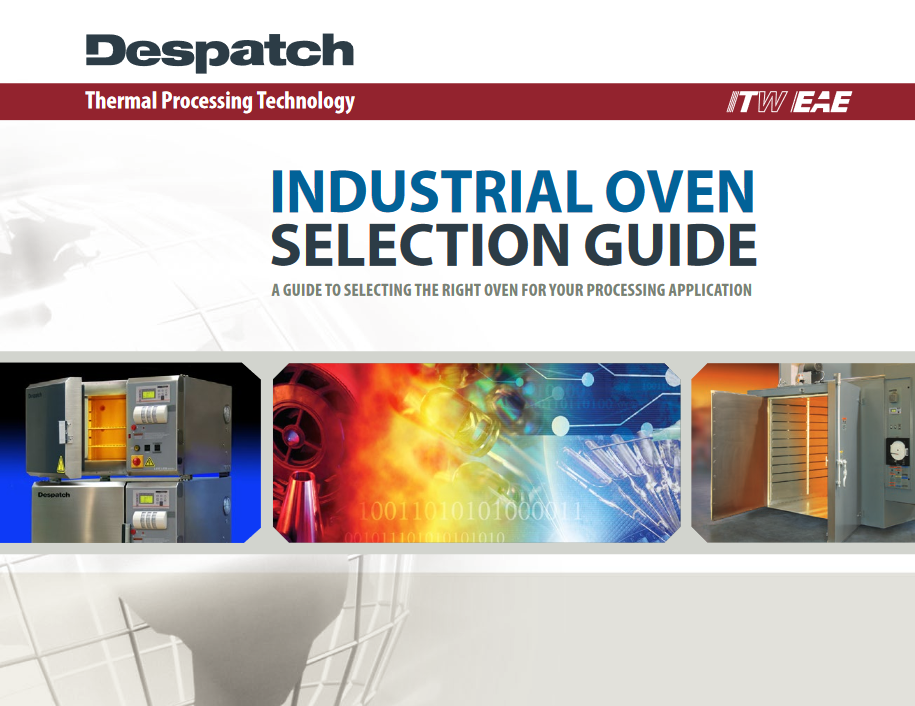Improved product quality. Reduced energy costs. Improved safety. Increase productivity and efficiency. These are the benefits you get when you choose the right industrial oven Choosing the right oven also extends its life and reduces maintenance costs. This checklist will help ensure you choose the right oven:
1. Understanding Your Thermal Processing Application
Understanding your thermal processing application is critical to choosing the right industrial oven. Typical applications include:
- Annealing
- Curing
- Drying
- Baking
- Sterilizing
- Burn-in testing
- Heat treating
- Aging
- Depyrogenation
Other considerations are temperature range and uniformity, product load size and type, cycle time, and any special features you may need, such as rapid cooling or exhaust gas treatment.
2. Deciding on a Batch or Continuous Process Oven
Basic types of process ovens:
- Batch ovens (for processing products one at a time)
- Continuous ovens (for mass-producing products)
Additional factors include production volume, product type, budget, space constraints, and flexibility.
3. Selecting The Ideal Chamber Size
Choosing a chamber size that’s too big wastes space, time, or energy. Choosing a chamber size that’s too small risks poor performance. Chamber types include
- Lab or Benchtop Ovens – laboratory test and development applications
- Cabinet Ovens – ergonomically designed reach-in ovens with an efficient footprint
- Walk-In and Truck-In Ovens – large batch ovens loaded by fork truck or manually, typically 360 cubic feet and larger for walk-in and 52 to 210 cubic feet for truck-in
4. Selecting Temperature and Uniformity Requirements
The specific temperature and uniformity requirements for an industrial oven vary depending on the type of products being processed and the desired results. Considerations include:
- Required dwell time and cycle time
- Type and amount of product load
- Heat-up rate control
- Specific cool-down requirements
- Oven Heating Capacity
- Mass and specific heat of the product
- Sufficient heat absorption
5. Confirm Temperature Uniformity Requirements
Temperature uniformity is critical to consistent heat processing results. Select an oven that delivers the uniformity needed for your process. Factors include:
- Cold air stratification (cold air entering the chamber)
- Accuracy and response speed of the controller
- Heat loss through oven walls or door/door seal
- Placement of workload
- Ability to direct the air through the chamber
- Volume and weight of products being processed
6. Determine the Best Airflow for Product Load
Airflow helps ensure uniform heating and product quality. Plus, it impacts energy efficiency, safety, and cleanliness. Basic airflows include
- Horizontal (left to right)
- Vertical (up and down)
- Uniflow (combines vertical up and horizontal airflow).
7. Design and Construction Considerations
- Stainless steel (for optimum corrosion resistance)
- Aluminized and mild steel (less expensive but provides less protection against corrosion, rust, and contamination)
8. Determine the Required Standards
Standards ensure safety, efficiency, and quality. But, there may also be specific safety standards that apply to certain types of industrial ovens. Standards to look for are
- U.L. & C-UL listed oven
- U.L. & C-UL listed control panel
- CE conformance.
9. Define Special Processing Needs
Understanding your product’s specific requirements improves product quality and consistency, reduces energy consumption, increases throughput, cuts downtime, and improves safety. Below are special oven processing features to consider:
- Clean process oven
- HEPA filters and filtration systems
- Rounded corner
- Continuous back welding
- Class A oven
- Forced exhaust keeps flammable vapor concentrates well below LFL
- Purge timer operating with forced exhaust to purge volatiles
- Airflow switch to prove exhaust airflow
- The explosion relief panel relieves vent pressure
- Inert Atmospheric Oven
- Inert gas to pressurize oven
- High integrity welds
- Water coils and air-to-air heat exchanger for cooling
- NFPA
Determine Controller Capabilities Needed
- Single setpoint controllers
- Programmable ramp/sock controllers
- Despatch Protocol 3 can be set to either function
- Testing, Curing, Drying, Annealing
- Testing, Curing, Drying, Bonding
- Curing, Drying Sterilizing, Aging
- Preheating and Testing Pipes
- Polyimide Curing
- Burn-In, Reliability Testing
- Sterilization, Depyrogenation
- Aging, Bonding, Curing, Drying
- Finish Baking, Heat Treating, Burn-in
- Aging, Annealing, Curing
- Preheating, Curing, Bonding, Drying, Heat Treating
10. Select a standard oven or a custom configuration
A standard oven works for many applications. But you may need a custom configuration to meet specific requirements like heat-up times, cool-down times, temperature, uniformity, instrumentation, and so on. Consult a product specialist for help with custom configurations.
Whether your thermal application is simple, complex, or anywhere in between, our guide will help you find the perfect solution.
To learn more download the FREE guide







